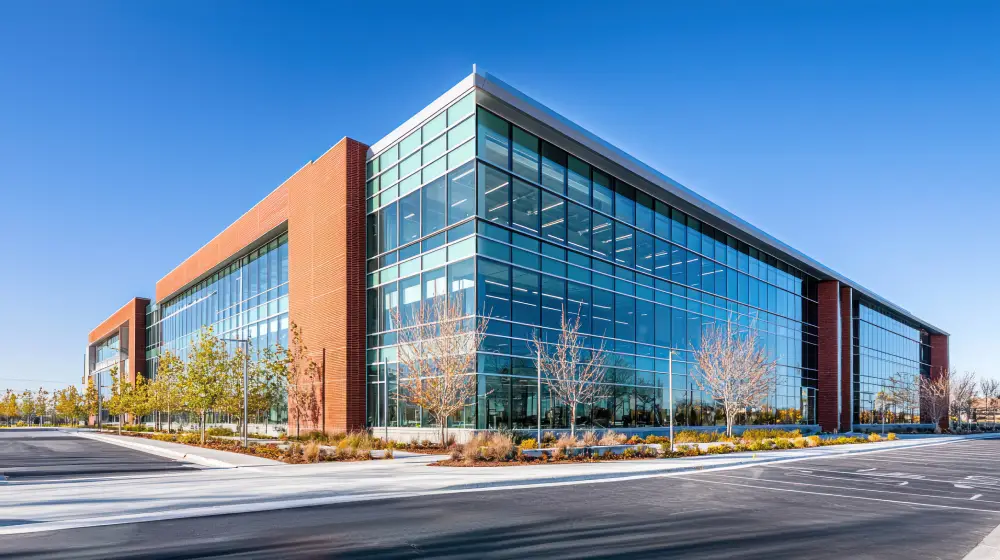In commercial real estate, profitability doesn’t only come from location and occupancy rates—it’s also driven by building performance. Outdated Commercial building MEP mechanical, electrical, and plumbing (MEP) systems can silently drain revenue through inefficiency, high maintenance costs, and compliance issues.
Upgrading these systems may seem like a capital expense, but in reality, it’s one of the smartest investments property owners can make. Modern MEP solutions improve energy efficiency, tenant comfort, and long-term asset value—all of which directly translate into a better return on investment (ROI).
Here’s how targeted MEP upgrades can transform underperforming buildings into high-value, future-ready assets.
Understanding the ROI of MEP Upgrades
MEP systems account for nearly 60% of a commercial building’s operational costs. When these systems age, inefficiencies multiply—energy consumption rises, downtime increases, and comfort levels drop.
By upgrading strategically, building owners can:
- Lower utility bills by up to 30–40%
- Extend equipment lifespan by 10–15 years
- Enhance property valuation and marketability
- Qualify for energy rebates and green certifications (like LEED or ENERGY STAR)
The key lies in selecting upgrades that deliver measurable financial and operational returns.
1. High-Efficiency HVAC Systems
Heating, ventilation, and air conditioning (HVAC) systems are the largest consumers of energy in most commercial spaces. Replacing old units with variable refrigerant flow (VRF) or energy recovery ventilators (ERVs) can lead to substantial savings.
Benefits:
- Energy cost reduction: Modern HVAC units operate up to 40% more efficiently than older models.
- Improved occupant comfort: Smart thermostats and zoning allow personalized temperature control.
- Better sustainability profile: Many systems now use low-GWP refrigerants, supporting ESG goals.
Adding smart HVAC controls further enhances efficiency through automation and predictive maintenance.
2. LED Lighting and Smart Controls
Lighting upgrades deliver one of the fastest ROIs in building management. Switching from fluorescent or halogen to LED lighting can reduce lighting energy consumption by up to 70%.
Paired with smart sensors (occupancy, daylight harvesting, and scheduling), lighting systems can automatically adjust brightness and shut off unused zones—improving both comfort and efficiency.
Many property owners see a payback period of just 1–3 years on lighting upgrades.
3. Plumbing Retrofits for Water Conservation
Modern plumbing systems save both water and energy. Replacing outdated fixtures with low-flow faucets, dual-flush toilets, and sensor-activated taps can cut water use by 30–50%.
For larger facilities, greywater recycling systems or rainwater harvesting setups further reduce water costs and contribute to sustainability goals.
In multi-tenant buildings, submetering helps track and manage consumption per tenant—encouraging responsible usage.
4. Building Automation Systems (BAS)
A Building Automation System ties together HVAC, lighting, power, and water systems under one digital control platform.
Modern BAS platforms use AI and IoT technology to analyze building performance in real-time, automatically adjusting for optimal efficiency.
Key features include:
- Energy monitoring dashboards
- Predictive maintenance alerts
- Remote access and control
- Integration with renewable energy sources
Buildings that deploy BAS often experience 10–20% lower annual energy bills and higher tenant satisfaction rates.
ROI Comparison: High-Impact MEP Upgrades
Here’s a breakdown of common MEP upgrades and their estimated ROI performance for commercial buildings.
| Upgrade Type | Average Energy/Utility Savings | Estimated Payback Period | Long-Term ROI (10 years) |
|---|---|---|---|
| High-Efficiency HVAC Systems | 30–40% | 4–6 years | 150–200% |
| LED Lighting + Smart Controls | 60–70% | 1–3 years | 300–400% |
| Plumbing Retrofits (Low-Flow Fixtures) | 30–50% | 3–5 years | 120–150% |
| Building Automation System (BAS) | 10–20% | 5–7 years | 100–130% |
| Renewable Energy Integration (Solar PV) | Up to 60% | 6–9 years | 200–300% |
These figures are estimates, but they highlight one consistent pattern: energy-efficient upgrades always pay off in the long run.
5. Renewable Energy and Energy Storage Systems
Incorporating solar photovoltaic (PV) panels and battery energy storage systems (BESS) not only lowers utility dependence but also future-proofs buildings against rising energy costs.
California’s Title 24 Energy Code now encourages renewable adoption, and many local utilities offer rebates for integrating solar power into commercial facilities. Combining these with smart load management enhances grid stability and sustainability credentials.
6. Power Quality and Electrical Upgrades
Older electrical systems often struggle to support modern equipment, especially in tech-heavy environments.
Upgrading to energy-efficient transformers, variable frequency drives (VFDs), and power factor correction devices can improve reliability and reduce wasted energy.
Advanced metering and smart panels also give building operators insight into real-time consumption and system performance—essential for long-term ROI tracking.
7. Maintenance Modernization with IoT Sensors
Predictive maintenance powered by IoT sensors prevents costly downtime. These sensors track equipment performance and alert facility teams to irregularities before failures occur.
Benefits include:
- 25–30% reduction in maintenance costs
- Extended equipment lifespan
- Improved safety and reliability
Data collected from IoT systems can be used to fine-tune operations and plan future upgrades strategically.
The Budlong Advantage
At Budlong, we believe every MEP upgrade should serve two goals: operational efficiency and measurable financial return.
Our engineers conduct detailed energy audits, ROI modeling, and life-cycle cost analyses to help clients identify which upgrades deliver the most impact—both in savings and sustainability.
From HVAC retrofits to smart automation, Budlong’s integrated MEP approach ensures that every improvement contributes directly to long-term value creation.
Conclusion
Commercial building MEP upgrades are more than maintenance—they’re an investment strategy.
By prioritizing high-efficiency systems, smart automation, and sustainable design, building owners can significantly enhance their ROI while meeting modern performance and environmental standards.
The bottom line?
Upgrading your building’s MEP systems doesn’t just save money—it strengthens your asset’s market position for years to come.

